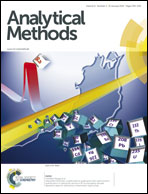A combined spectroscopic study on Chinese porcelain containing ruan-cai colours
Abstract
Because of its major contributions to the world economy and cultural heritage, Chinese porcelain and its technology can be considered as very important. In this research, the applicability of Raman spectroscopy and X-Ray Fluorescence (XRF) spectroscopy to study the pigments of the ruan-cai colour palette of Chinese porcelain dating from the 18th century was evaluated. Next to the investigations based on stylistic analysis, the use of other analysis techniques is important to obtain complementary information. Raman spectroscopy and XRF spectroscopy are two non-invasive, analytical techniques proven to be useful for the determination of the nature and composition of pigments used to decorate ceramics. As a result, analytical analysis allows us to retrieve more information about the production of Chinese porcelain. Based on visual inspection of the decoration, the objects could be divided into two groups and to evaluate the use of the combined analytical approach, all groups and subgroups were sampled. Before Raman and XRF analyses, the samples were cut, embedded and polished, in order to be able to measure the transversal section of the samples. In this way, each layer of the porcelain samples could be analysed separately. The results show that the blue colour is cobalt-aluminium oxide, in red zones haematite (α-Fe2O3) is present and the green area contains a mixture of CuO in a lead-rich basis and a solid solution of malachite (Cu2CO3(OH)2). The opaque yellow and white colours were identified as lead tin yellow type II (PbSn1−xSixO3, where x ∼ 0.25) and a lead arsenate, respectively.


 Please wait while we load your content...
Please wait while we load your content...